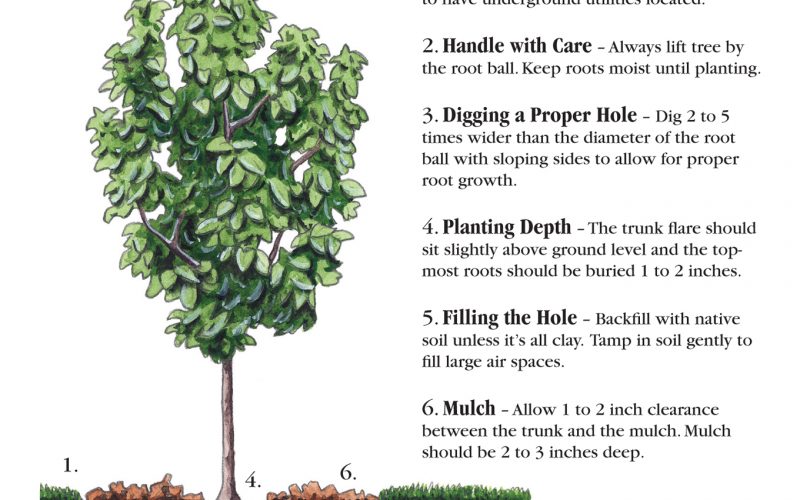
Courtesy of Arbor Day Foundation
Arbor Day is Friday, April 29 — a great time to adopt a special tree and bring it home with you! The Arbor Day Foundation claims that this celebration first got started in Nebraska with a pioneer named Morton in April of 1872. But that’s only the first American documented Arbor Day; Spain has us beat with the first documented tree planting festival in the world organized by the mayor of the village of Mondoñedo in 1592. Theirs lasted three days with feasting and dancing as well as planting (now there’s an idea!).
Planting a tree, any tree, is a good thing to do. Planting a native tree is an excellent thing to do. Native trees can fit their ecosystem homes and do less damage and more good for people, plants, pollinators and wildlife. According to Jennifer Ogle of the Arkansas Native Plant Society, some easy-to-find native trees to plant in Northwest Arkansas include the Flowering Dogwood, Yellow Wood, Ohio Buckeye, Redbud, and any of our native oaks which provide acorns and habitat for other native species.
Flowering Dogwood (Cornus florida) is native to eastern North America and northern Mexico in zones 5-9. This is one of the better-known trees, since the white flowers are one of many harbingers of springtime in the woods. It does best in a spot with great morning sun but some afternoon shade, and grows well in moist, acidic soil. Don’t plant it near parking lots, air conditioner units, or anything that could overheat the tree. Be careful when mowing around the trunk or roots, since injuries to these areas make dogwoods weaker and more susceptible to disease and pest infestation. Your dogwood could grow 33 feet high with a potential trunk diameter of one foot, so plan your space accordingly.
Yellow Wood (Cladrastis kentukea) is another deciduous tree native in the southeast but one of the rarest trees in eastern North America. Just like with the flowering dogwood or any tree sapling, be prepared for future decades of growth: your yellow wood tree could grow 33-49 feet tall. It enjoys full sunlight, well-drained soils, and can tolerate urban settings. Yellow Wood trees have some of the best fall color, with bright autumn yellow leaves. It’s also attractive to birds.
Ohio Buckeye (Aesculus glabra) has foliage and fruits that contain tannic acid which is poisonous to cattle and humans, but if this won’t be a problem in your yard, they’re great native trees to plant. If possible, begin with a broad list of natives rather than exotic species, and narrow it down based on the needs of the plant, people, and habitat where your tree will take root. It’s much better to get to know a tree like a friend or an adopted pet; unforeseen problems will be reduced and benefits can be enhanced for everyone. Happy Arbor Day!
Amanda Bancroft is a writer, artist, and naturalist building an off-grid earthbag cottage for land conservation on Mt. Kessler. She and her husband Ryan blog about their adventures and offer a solar-hosted online educational center on how to make a difference with everyday choices at: www.RipplesBlog.org.










